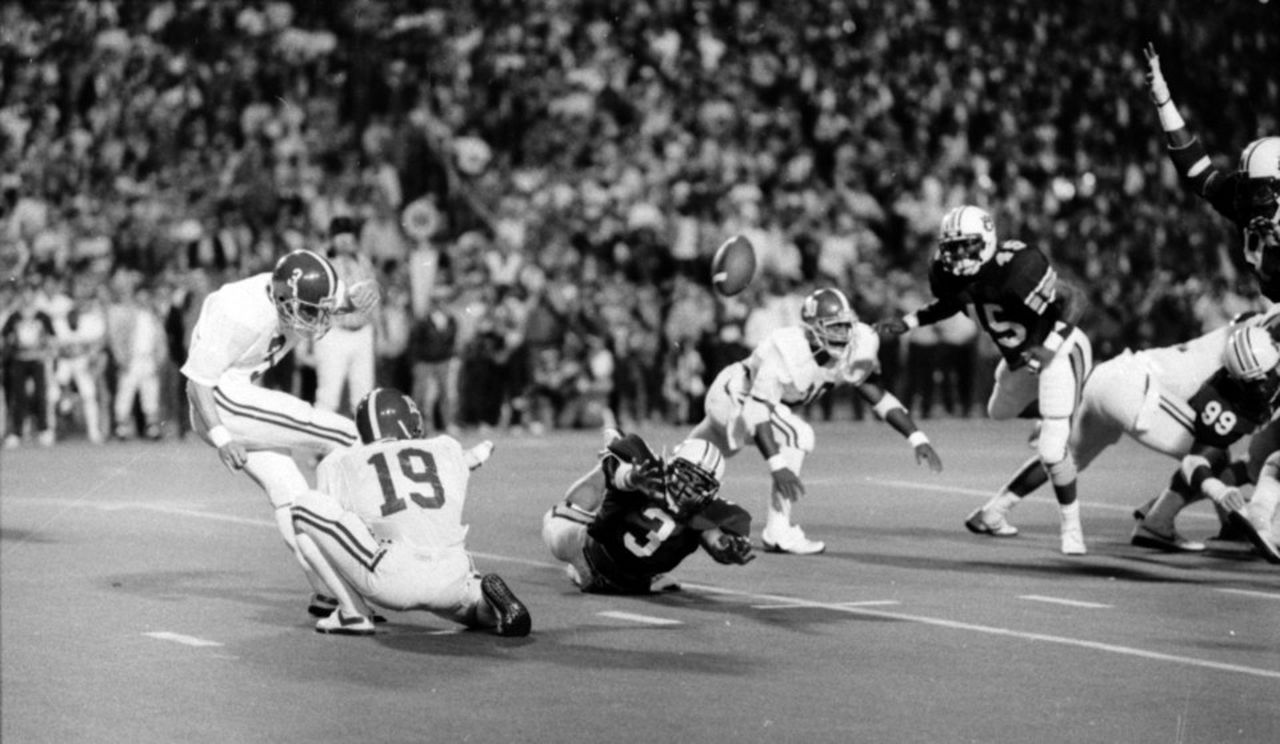10 old Alabama football traditions we miss
Alabama football has plenty of great gameday traditions — from “Dixieland Delight” to “Rammer Jammer,” the Elephant Stomp to the Walk of Champions, Big Al to the Million Dollar Band.
And, of course, winning.
But for those of us who go back a few years — OK, decades — some of those traditions that we grew up with are long gone, erased by time and replaced with something new.
That’s not necessarily a bad thing — it’s progress, after all — but if you weren’t around for, say, the heyday of “The Bear Bryant Show” or the glory days of the wishbone offense, you don’t know what you missed.
So, while we’re feeling nostalgic, here, in no particular order, are 10 old Alabama football traditions that we miss the most:
From 1948 to 1988, the annual Alabama-Auburn game, which became known as the Iron Bowl, was played every year at Legion Field in Birmingham. Auburn moved its home games to Jordan-Hare Stadium in 1989, and Alabama began playing its home games in Bryant-Denny Stadium in Tuscaloosa in 2000. One of the most memorable Iron Bowls at Legion Field was this one in 1985, when Van Tiffin kicked a 52-yard-field goal as time expried to lift the Tide to a 25-23 come-from-behind win over the Tigers. (Photo courtesy of Paul W. Bryant Museum; used with permission)
The Iron Bowl at Legion Field
From Snake’s “Run in the Mud” to Coach Bryant’s 315th victory to “The Kick” by Van Tiffin, the Old Gray Lady on Birmingham’s Graymont Avenue was the scene of some of the most dramatic wins in Alabama football history. (And, yes, Auburn has a few good memories there, too — most notably, this one.) This season marks 25 years since “The Football Capital of the South” hosted its last Iron Bowl, a 31-17 Tide triumph over the Tigers in 1998. And while we love playing all our home games on campus in beautiful Bryant-Denny Stadium, we’ll always have a soft spot for the good old days at Legion Field, when the creaky, old stadium would shake and rattle whenever the Tide rolled.

During the 1970s, Alabama cheerleaders added the pennants of vanquished opponents to the Bama Meat Pole, which they paraded around the stadium to commemorate every win. As the season progressed and the wins piled up, the pole was filled from top to bottom with enemy pennants. (Photo courtesy of Paul W. Bryant Museum; used with permission)
The Bama Meat Pole
Alabama fans of a certain generation may remember seeing the UA cheerleaders wave the Bama Meat Pole after every win — a tradition that, to the best of our research, began during the Crimson Tide’s dominant run in the 1970s and lasted about a decade. The Meat Pole was a long, hand-held pole, and over the course of a season, the Bama cheerleaders added the pennants of every team the Tide defeated that year. Most years, by the end of the season, the pole was filled from top to bottom with enemy pennants. The tradition died out in the 1980s, when those 10- and 11-win seasons were less frequent and four- and five-loss seasons became more common. The Meat Pole did, however, make a reappearance during the 1992 National Championship season, when the Tide finished 13-0 and offensive lineman Roosevelt Patterson was pictured parading the Meat Pole around the Superdome following the Tide’s 34-13 thrashing of Miami in the Sugar Bowl.
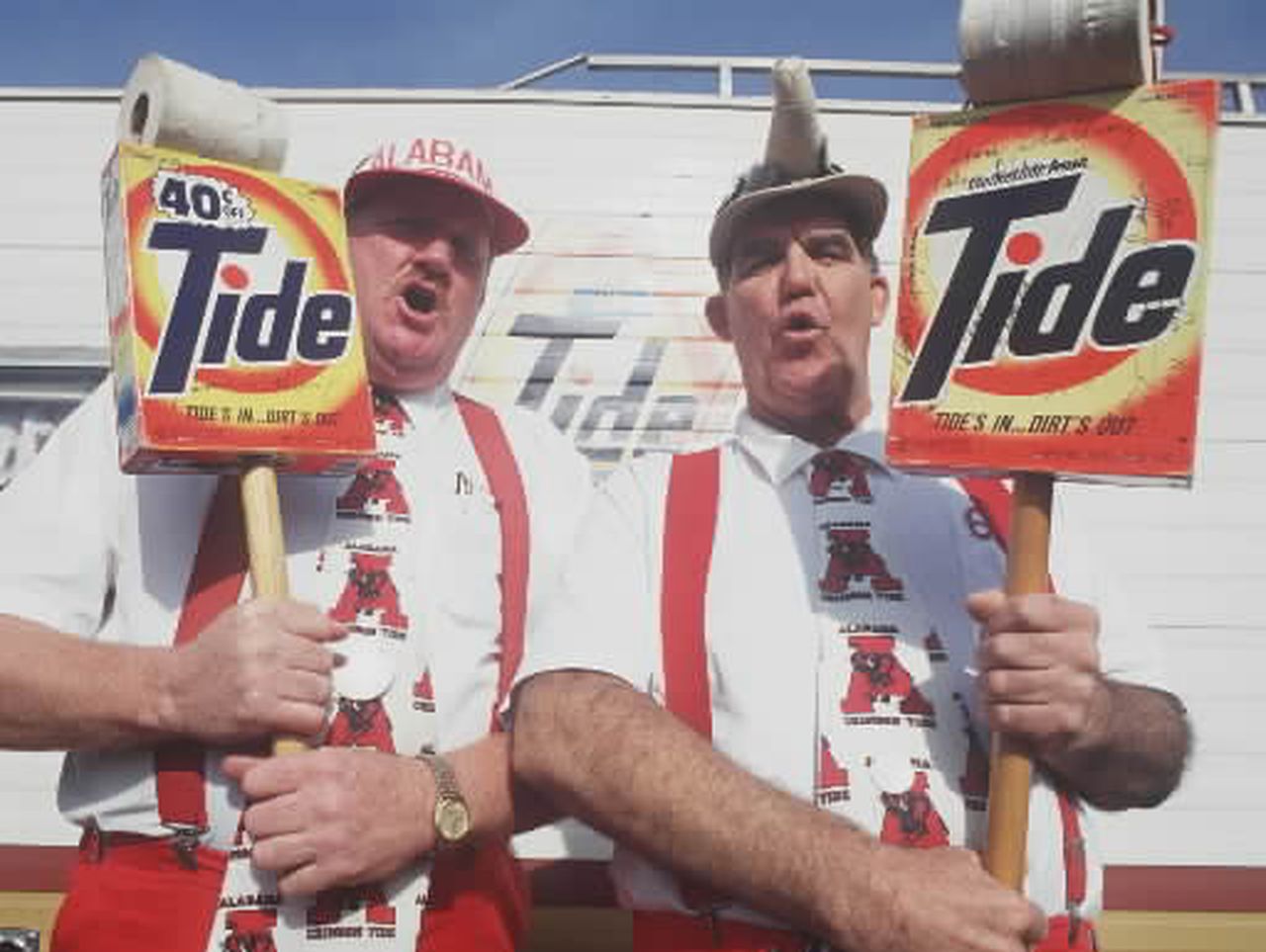
Alabama football superfans Troy Ferguson, left, and Jerry Bogle, who were known as “The Big Dogs,” carried their “Roll Tide” signs with them to all of the Bama games.(Birminngham News file/Bernard Troncale)
‘The Big Dogs’ from Scottsboro
At 6-foot-3 and 6-foot-4, respectively — and with a good 570 pounds between the two of them — Jerry Bogle and Troy Ferguson could have filled in along the defensive line at Alabama. But “The Big Dogs” from Scottsboro, as Bogle and Ferguson were known, did their barking up in the stands. Throughout the 1980s and ’90s, the towering Alabama superfans arrived at nearly every game, home and away, decked out in red britches with red suspenders, wearing wide-body ties and holding up “Roll Tide” signs they made from toilet paper rolls and Tide detergent boxes. The TV cameras couldn’t miss them, of course. But while they were a couple of good-natured goofballs on the surface — “the Laurel and Hardy of Crimson Tide football,” The Birmingham News called them in a 1993 feature story — their love for the University of Alabama was genuine. Bogle died in 2004 and Ferguson died in 2019, but “The Big Dogs” left a supersized legacy that is bigger than the both of them.
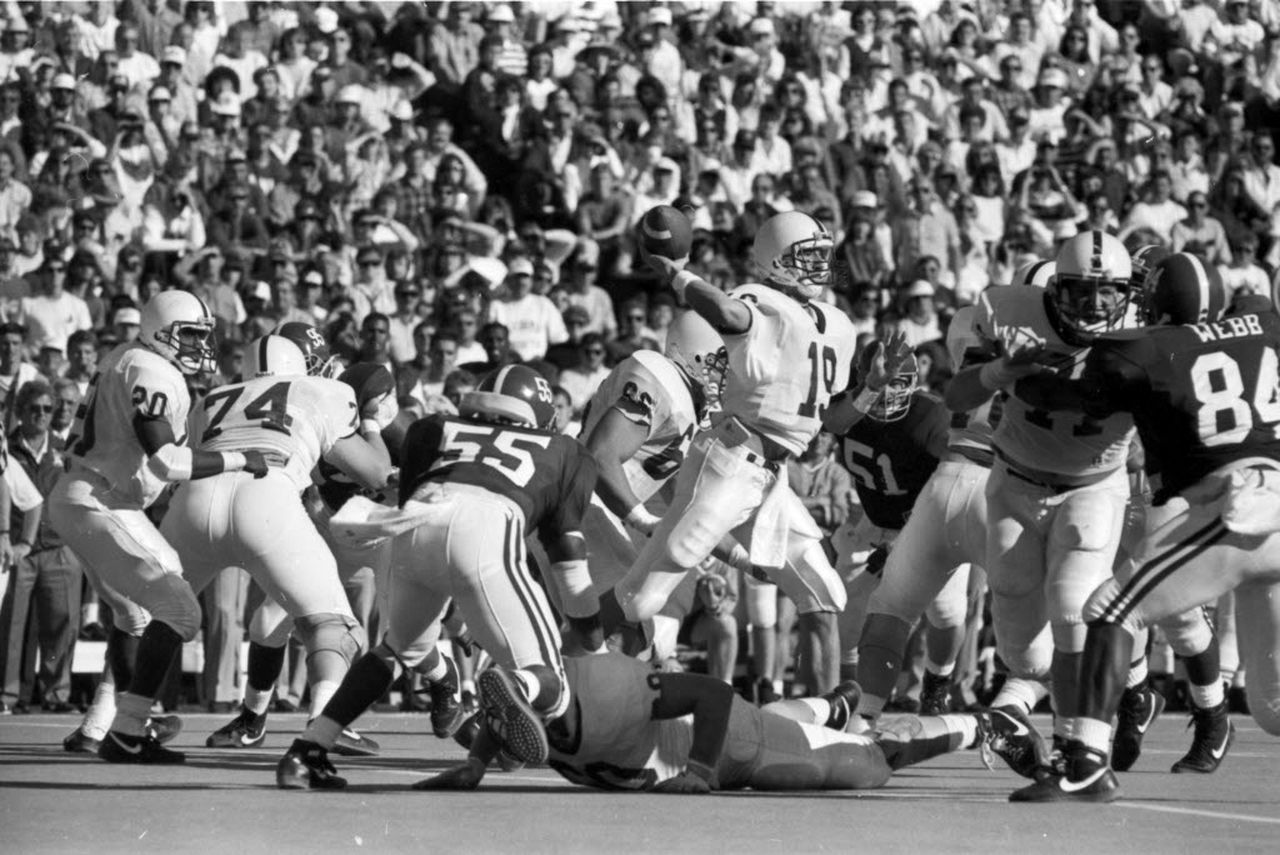
For 10 consecutive years, from 1981 to 1990, Alabama and Penn State played a home-and-home rivalry. The Crimson Tide had a 6-4 record against the Nittany Lions during that stretch.(Birmingham News file/Tom Self)
The home-and-home series with Penn State
Before 1981, Alabama and Penn State, two of the most storied programs in college football history, had met only three times — most famously in the “Goal Line Stand” Sugar Bowl that lifted Alabama to the 1978 national championship. But for 10 straight seasons, from ‘81 to ‘90, the Crimson Tide and Nittany Lions played each other in a home-and-home series that alterated between Beaver Stadium in University Park, Pa., and Bryant-Denny Stadium in Tuscaloosa and Legion Field in Birmingham. Alabama won six games and Penn State won four during that stretch. Since then, the two teams have met just twice, in 2010 and 2011, with Alabama winning both games.
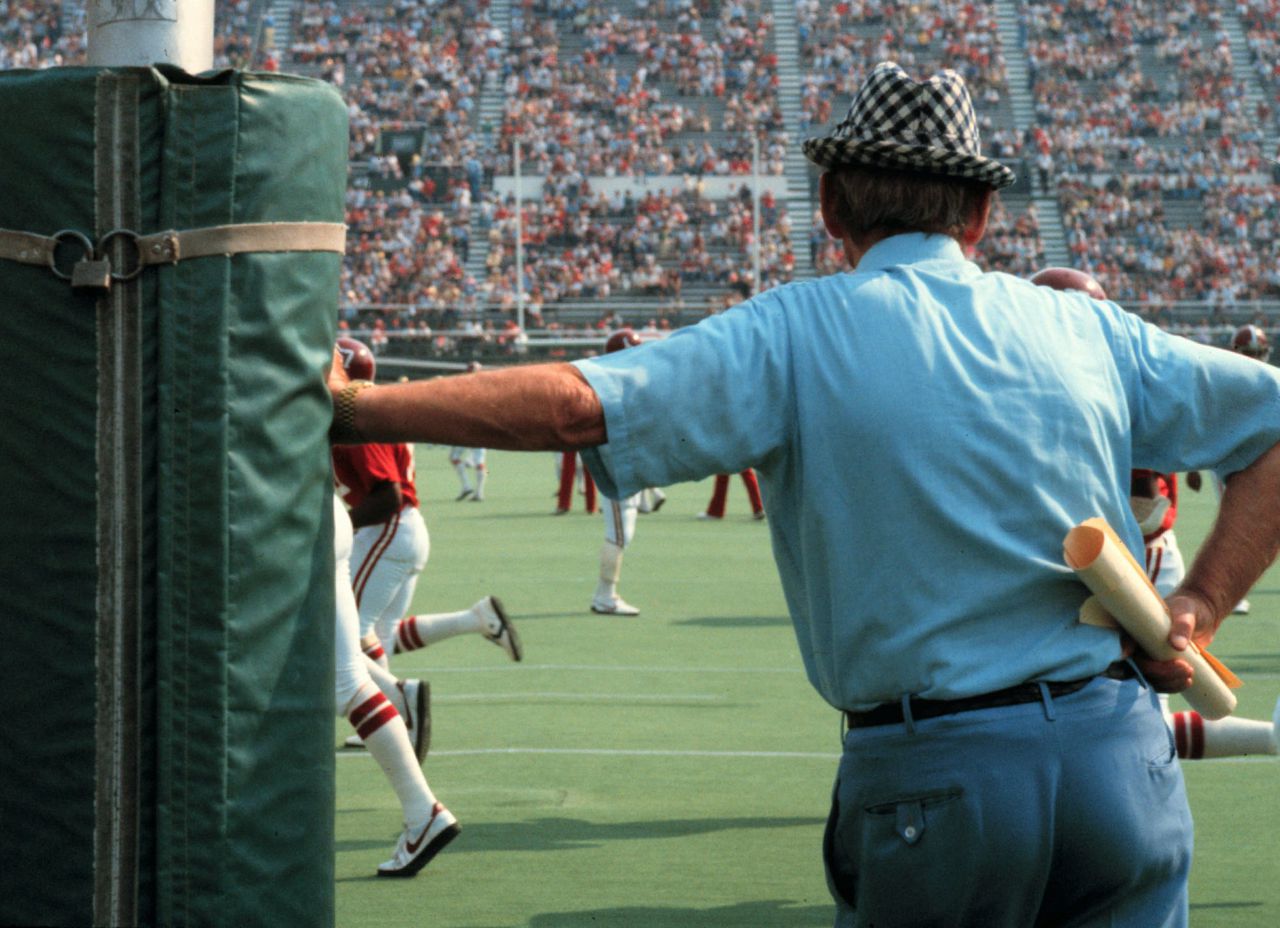
Alabama coach Paul “Bear” Bryant leans against a goalpost before a game at Legion Field in Birmingham.(Huntsville Times file/Rod Whited)
Coach Bryant leaning against the goalpost
There are few more iconic images in Alabama football history than that of Paul “Bear” Bryant — wearing his signature fedora and clutching his rolled-up game notes — leaning against a goalpost while he watched his young warriors warm up before a game. Up in the stands, fans would peer through their binoculars to get a glimpse of the legendary coach, and down on the field, even the cheerleaders for opposing teams — including rivals Auburn and Tennessee — would politely interrupt his pre-game ritual to pose for a picture with the John Wayne of college football.

During his three-year stint as the head football coach of the Alabama Crimson Tide, Bill Curry often wore a Cliff Engle sweater on the sidelines.(Photo courtesy of Paul W. Bryant Museum; used with permission)
Bill Curry’s sweaters
Just kidding! We’re just checking to make sure you’re still paying attention. It is rare to find an Alabama fan who misses those Cliff Engle sweaters that the embattled Bill Curry sported during his brief, better-than-he-is-given-credit-for stint as the head coach of the Crimson Tide. Occasionally, though, you’ll spot some old geezer wearing one at a game.
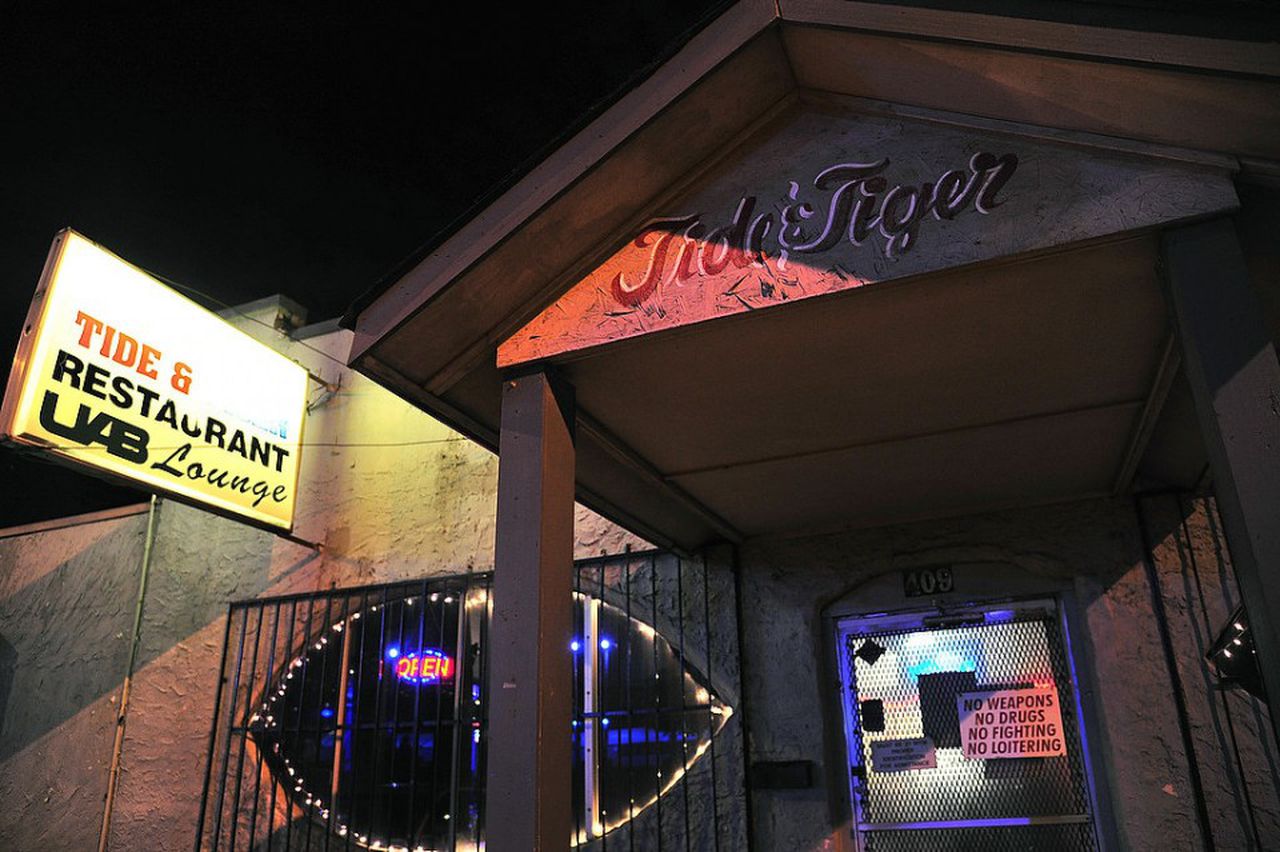
The old Tide & Tiger Lounge on Graymont Avenue in Birmingham was the place to go before and after Alabama football games at Legion Field.(Tamika Moore/[email protected])
The Tide & Tiger Lounge
Back in the days when Alabama played three or four home games in Birmingham every year, the Tide & Tiger Lounge — a chip-shot field goal away from the south entrance to Legion Field — was the place to be before, after, and, if you didn’t have a ticket, during the game. Originally a barbecue joint, the Graymont Avenue roadhouse with the football-shaped windows was previously known as the Quarterback Drive-In before it became the Tide & Tiger Lounge sometime in the late 1950s, as Jesse Chambers wrote in a 2013 story for AL.com. With its proximity to Legion Field, the place was always rocking whenever the Tide came to town, and especially so on Iron Bowl weekends.

Alabama’s wishbone offense generated record-breaking numbers — and three national titles — during a glorious run in the 1970s.(Photo courtesy of Paul W. Bryant Museum; used with permission)
The Wishbone
Before Nick Saban brought us “Joyless Murderball,” Paul Bryant introduced Alabama to the wishbone, a domineering, ground-control offense that efficiently wore down opponents six, seven and eight yards at a time — accelerated with the occasional 60-, 70- or 80-yard burst (like Wilbur Jackson’s epic, long-distance run against Tennessee in 1973). When the triple option was firing on all cylinders, the Tide throttled teams by scores like 77-6 and 66-0, and in one game, Alabama set a team and SEC record that will never be broken, racking up 748 rushing yards in a single game. Alabama didn’t invent the wishbone, but during its illustrious reign in the 1970s (eight SEC championships, three national titles) nobody did it better. Those were the days, my friend.

On several occasions throughout its history, the Alabama Crimson Tide has worn white helmets — most notably when Ray Perkins was head coach in the early to mid-1980s — but current head coach Nick Saban is adament that his teams will never wear white headgear.(Photo courtesy of Paul W. Bryant Museum; used with permission)
White helmets
OK, we admit we are in the minority here. But for old times’ sake, maybe once every couple of seasons — say, like on homecoming — Alabama could bring back those white helmets with the crimson numbers that the Tide players wore in 1950s and ‘60s and in that historic upset of USC in 1971. The white helmets made a brief comeback under Ray Perkins, who, after succeeding Coach Bryant, brought them out of the closet for the 1983 and ‘84 seasons, but it was a short-lived fashion trend. And it will be a while before they come back in style. Nick Saban has made it clear that he is not having it.

“The Bear Bryant Show” aired on Alabama TV stations at 4 p.m. on Sundays during football season.(Photo courtesy of Paul W. Bryant Museum; used with permission)
‘The Bear Bryant Show’
It was a Sunday afternoon ritual that played out in dens from Decatur to Dothan, Boaz to Bay Minette. The clock struck 4 o’clock, and Tide fans all over the state turned on their TV sets and tuned in to hear what “The Bear” had to say about the previous day’s game. For the Alabama faithful, the hour-long show was must-see TV – especially in the days when the Tide was limited by NCAA rules to only one or two games a year on network television. So, “The Bear Bryant Show” was the only way to see most games. Every show started with Coach Bryant and host Charley Thornton opening a bag of Golden Flake chips and taking swigs of Coca-Cola — Coke and Golden Flake being the “Great Pair” that sponsored the show — and over the next 60 minutes, Bryant, in a gravelly mumble that was often hard to decipher, broke down every play. (A big play typically elicited his signature phrase, “Bingo! That’s a goodie!”). Then, at the end of the show, he singled out his players by their first and last names, their hometowns, and sometimes, even their mama and daddy’s names. It was as corny as it gets, but we hardly ever missed a Sunday.
